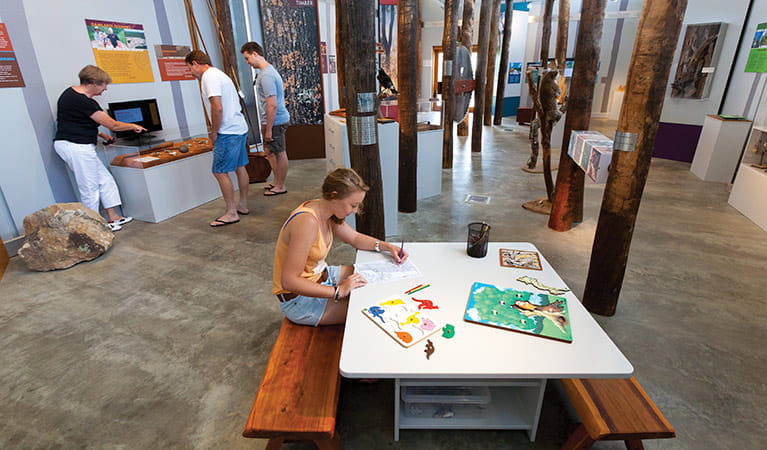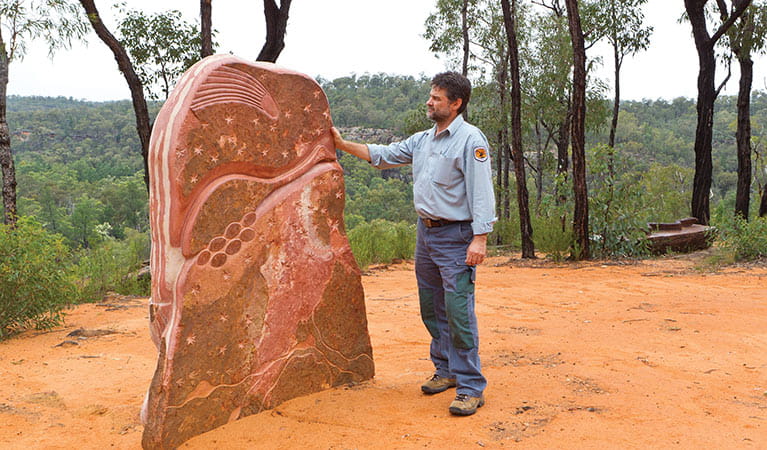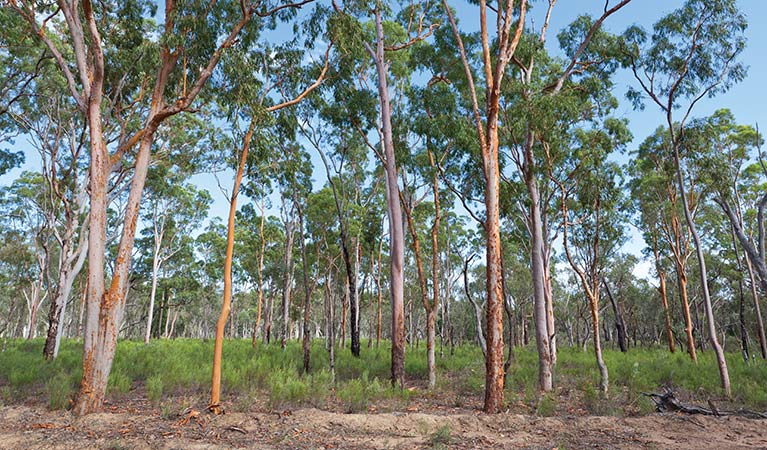Pilliga Forest Discovery Centre
Pilliga National Park
Learn more
Learn more about why this park is special
Pilliga Forest Discovery Centre is in Pilliga National Park. Here are just some of the reasons why this park is special:
A bird watcher’s paradise

Pilliga Forest is a mixture of eastern and western climates, making it very attractive to birds – more than 230 species have been recorded. You’re bound to see some of that range during your time at the park, and if you keep a close eye out and bring some binoculars, you’re definitely see even more. Pilliga is one of the few places left in NSW where you can catch sight of the grey-crowned babbler. It’s a bird that lives in family groups and roost together in domed nests of sticks. Other birds you may see include glossy black cockatoos, brown treecreepers, regent honeyeaters, barking owls, and red-capped robins. For more information about great bird watching opportunities in Pilliga, be sure to pick up a copy of Bird Routes of Baradine from Pilliga Forest Discovery Centre.
- Pilliga Forest Discovery Centre The Pilliga Forest Discovery Centre is the best place for visitors and tourists to collect information about the Pilliga Forest before setting off on their adventure.
Aboriginal culture

Pilliga is traditional Country of the Gamilaraay People and much evidence of their ancient connection to the land exists in the park today. On your exploration of the park, you may see stone tools, grinding grooves, modified trees, and rock art. Find out more about the Gamilaraay People and their ancient culture on a guided tour of Sandstone Caves, a place containing Aboriginal rock art and engravings.
Marsupials territory

Pilliga Forest supports a vast number of mammals, including swamp wallabies, eastern grey kangaroos, red-necked wallabies, and eastern pygmy possums.